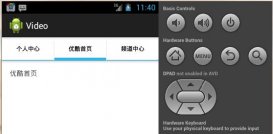前言:前一段时间新开源了一种全面插件化的方案-- RePlugin,之前一种都在关注 DroidPlugin 并且很早也在项目中试用了,但最终没有投入到真正的生产环节,一方面是项目中没有特别需要插件化的需求,另一方面也考虑到 DroidPlugin 不是特别稳定,Android系统每更新一次 DroidPlugin 可能就会出现一些 Bug,毕竟 Hook 了 Android 原生的太多东西,系统一旦更新引发 Bug 是在所难免的。当然,这些并不能否认 DroidPlugin 的优秀,它的原理和思路值得我们深入探究、学习,前一段时间更新过几篇插件化的原理分析的文章(基于 DrodiPlugin 原理)学习过程中不得不叹服作者的思路和技术深度!前几篇小白也能看懂的插件化系列文章仍然会不定期更新,但目前我们可以先来学习学习 RePlugin,毕竟多学无害,也能互相参考他们的思路,比较优缺点。
1.什么是RePlugin?
在Android开发领域,有关插件化的讨论一直热度不减。目前市面上的插件化方案虽然很多,但多数只能实现某些功能的插件化,距离开发者的预期尚有相当差距。对此,在近期GMTC全球移动技术大会上,360手机卫士主程序架构负责人张炅轩宣布,360的插件化框架RePlugin已经可以实现“全面插件化”,同时具有出色的稳定性和灵活性,可适用于各种类型的应用上。
“RePlugin预计7月份开源,这将是我们献给安卓世界最好的礼物。”360如是说。
2.RePlugin有什么用?
RePlugin是一套完整的、稳定的、适合全面使用的,占坑类插件化方案,由360手机卫士的RePlugin Team研发,也是业内首个提出”全面插件化“(全面特性、全面兼容、全面使用)的方案。
3.RePlugin官方介绍
其主要优势有:
- 极其灵活:主程序无需升级(无需在Manifest中预埋组件),即可支持新增的四大组件,甚至全新的插件
- 非常稳定:Hook点仅有一处(ClassLoader),无任何Binder Hook!如此可做到其崩溃率仅为“万分之一”,并完美兼容市面上近乎所有的Android ROM
- 特性丰富:支持近乎所有在“单品”开发时的特性。包括静态Receiver、Task-Affinity坑位、自定义Theme、进程坑位、AppCompat、DataBinding等
- 易于集成:无论插件还是主程序,只需“数行”就能完成接入
- 管理成熟:拥有成熟稳定的“插件管理方案”,支持插件安装、升级、卸载、版本管理,甚至包括进程通讯、协议版本、安全校验等
- 数亿支撑:有360手机卫士庞大的数亿用户做支撑,三年多的残酷验证,确保App用到的方案是最稳定、最适合使用的
一、集成主工程
1、在项目根目录的 build.gradle 下添加 RePlugin Host Gradle 依赖:
|
1
2
3
4
5
6
7
8
9
10
|
buildscript { repositories { jcenter() } dependencies { classpath 'com.android.tools.build:gradle:2.3.3' // 1、添加RePlugin Host Gradle依赖 classpath 'com.qihoo360.replugin:replugin-host-gradle:2.2.1' }} |
2、在 app/build.gradle 下添加 RePlugin Host Library 依赖(为了更清晰的表示出代码添加的位置,将原有代码也一并贴出):
apply plugin: 'com.android.application'
|
1
2
3
4
5
6
7
8
9
10
11
12
13
14
15
16
17
18
19
20
21
22
23
24
25
26
27
28
29
30
31
32
33
34
35
36
37
38
39
40
41
|
android { compileSdkVersion 26 buildToolsVersion "26.0.1" defaultConfig { applicationId "cn.codingblock.repluginstudy" minSdkVersion 21 targetSdkVersion 26 versionCode 1 versionName "1.0" testInstrumentationRunner "android.support.test.runner.AndroidJUnitRunner" } buildTypes { release { minifyEnabled false proguardFiles getDefaultProguardFile('proguard-android.txt'), 'proguard-rules.pro' } }}apply plugin: 'replugin-host-gradle'// 集成 RePlugin 添加的配置// 集成 RePlugin 添加的配置repluginHostConfig { useAppCompat = true // 如果项目需要支持 AppComat,则需要将此配置置为 true // 如果应用需要个性化配置坑位数量,则需要添加以下代码进行配置// countNotTranslucentStandard = 6// countNotTranslucentSingleTop = 2// countNotTranslucentSingleTask = 3// countNotTranslucentSingleInstance = 2}dependencies { compile fileTree(dir: 'libs', include: ['*.jar']) androidTestCompile('com.android.support.test.espresso:espresso-core:2.2.2', { exclude group: 'com.android.support', module: 'support-annotations' }) compile 'com.android.support:appcompat-v7:26.+' compile 'com.android.support.constraint:constraint-layout:1.0.2' compile 'com.qihoo360.replugin:replugin-host-lib:2.2.1' // 集成 RePlugin 添加的配置 testCompile 'junit:junit:4.12'} |
以上代码有三点需要注意:
- 需要将 apply plugin: 'replugin-host-gradle' 放在 android {...} 之后。
- 如果项目需要支持 AppComat,则需要将 repluginHostConfig 的 userAppCompat 置为 true。
- 如果应用需要个性化配置坑位数量,则需要在 repluginHostConfig 中添加以下代码进行配置:
|
1
2
3
4
5
6
7
|
countNotTranslucentStandard = 6countNotTranslucentSingleTop = 2countNotTranslucentSingleTask = 3countNotTranslucentSingleInstance = 2 |
3、让工程的 Application 直接继承自 RePluginApplication:
|
1
|
public class MyApplication extends RePluginApplication { } |
当然,同时不要忘了在 AndroidManifest 对 MyApplication 的相关配置。
说明:有时候由于项目原有结构的需要,我们可能不能直接使用继承 RePluginApplication 的方式,这个问题看来 RePlugin 开发者也想到了,所以还特地多了一种选择,下面是项目的 Application 不继承 RePluginApplication 的方式:
|
1
2
3
4
5
6
7
8
9
10
11
12
13
14
15
16
17
18
19
20
21
22
23
24
25
26
27
28
29
30
31
32
|
public class MyApplication extends Application { @Override protected void attachBaseContext(Context base) { super.attachBaseContext(base); RePlugin.App.attachBaseContext(this); } @Override public void onCreate() { super.onCreate(); RePlugin.App.onCreate(); } @Override public void onLowMemory() { super.onLowMemory(); RePlugin.App.onLowMemory(); } @Override public void onTrimMemory(int level) { super.onTrimMemory(level); RePlugin.App.onTrimMemory(level); } @Override public void onConfigurationChanged(Configuration newConfig) { super.onConfigurationChanged(newConfig); RePlugin.App.onConfigurationChanged(newConfig); }} |
二、集成插件
新建一个工程做为插件APP,这里为了方便起见,直接在主工程中新建了一个 Module。
1、同集成主工程类似,在根目录的 build.gradle 添加 RePlugin Plugin Gradle 依赖(若是单独创建插件工程,则不需要添加注释1下面的代码):
|
1
2
3
4
5
6
7
8
9
10
11
12
|
buildscript { repositories { jcenter() } dependencies { classpath 'com.android.tools.build:gradle:2.3.3' // 1、添加RePlugin Host Gradle依赖(主工程用) classpath 'com.qihoo360.replugin:replugin-host-gradle:2.2.1' // 2、添加RePlugin Plugin Gradle依赖(插件工程用) classpath 'com.qihoo360.replugin:replugin-plugin-gradle:2.2.1' }} |
2、在 app/build.gradle 中添加 replugin-plugin-gradle 插件和 replugin-plugin-lib 依赖:
|
1
2
3
4
5
6
7
8
9
10
11
12
13
14
15
16
17
18
|
apply plugin: 'com.android.application'android { ...}apply plugin: 'replugin-plugin-gradle' // 集成 RePlugin 添加的配置dependencies { compile fileTree(dir: 'libs', include: ['*.jar']) androidTestCompile('com.android.support.test.espresso:espresso-core:2.2.2', { exclude group: 'com.android.support', module: 'support-annotations' }) compile 'com.android.support:appcompat-v7:26.+' compile 'com.android.support.constraint:constraint-layout:1.0.2' compile 'com.qihoo360.replugin:replugin-plugin-lib:2.2.1' // 集成 RePlugin 添加的配置 testCompile 'junit:junit:4.12'} |
三、管理插件
RePlugin 对插件定义两种方式一种是外置插件、一种是内置插件。
- 外置插件:即从网络下载或者从SD卡中获得的,以 .apk 结尾。
- 内置插件:内置于 APP 之中,并随 APP 一并发版,需要将插件 apk 改成 .jar 结尾放入主程序的assets/plugins目录。
(一)外置插件的安装(升级)、启动、卸载
安装插件:
|
1
2
3
|
PluginInfo pluginInfo = RePlugin.install(Environment.getExternalStorageDirectory().getPath().toString() + "/plugin1.apk");System.out.println(pluginInfo); |
同时别忘了添加文件读写的权限。 输出日下:
10-30 16:10:23.769 20280-20280/cn.codingblock.repluginstudy I/System.out: PInfo { <cn.codingblock.plugin1:1(4)> [APK] [DEX_EXTRACTED] processes=[] js={"pkgname":"cn.codingblock.plugin1","name":"cn.codingblock.plugin1","low":10,"high":10,"ver":1,"verv":2814792716779521,"path":"\/data\/user\/0\/cn.codingblock.repluginstudy\/app_p_a\/-347346251.jar","type":11,"frm_ver":4} dex=/data/data/cn.codingblock.repluginstudy/app_p_od/-347346251.dex nlib=/data/data/cn.codingblock.repluginstudy/app_p_n/-347346251 }
安装成功了! (升级插件也是用 install() 方法,不可降级,同本版可覆盖安装)
启动插件
先来看一下 RePlugin.java 中启动插件相关的源码
|
1
2
3
4
5
6
7
8
9
10
11
12
13
14
15
16
17
18
19
20
21
22
23
24
25
26
27
28
29
30
31
32
33
34
35
36
37
38
39
40
41
42
43
44
45
46
|
/** * 创建一个用来定向到插件组件的Intent <p> * <p> * 推荐用法: <p> * <code> * Intent in = RePlugin.createIntent("clean", "com.qihoo360.mobilesafe.clean.CleanActivity"); * </code> <p> * 当然,也可以用标准的Android创建方法: <p> * <code> * Intent in = new Intent(); <p> * in.setComponent(new ComponentName("clean", "com.qihoo360.mobilesafe.clean.CleanActivity")); * </code> * * @param pluginName 插件名 * @param cls 目标全名 * @return 可以被RePlugin识别的Intent * @since 1.0.0 */public static Intent createIntent(String pluginName, String cls) { Intent in = new Intent(); in.setComponent(createComponentName(pluginName, cls)); return in;}/** * 开启一个插件的Activity <p> * 其中Intent的ComponentName的Key应为插件名(而不是包名),可使用createIntent方法来创建Intent对象 * * @param context Context对象 * @param intent 要打开Activity的Intent,其中ComponentName的Key必须为插件名 * @return 插件Activity是否被成功打开? * FIXME 是否需要Exception来做? * @see #createIntent(String, String) * @since 1.0.0 */public static boolean startActivity(Context context, Intent intent) { // TODO 先用旧的开启Activity方案,以后再优化 ComponentName cn = intent.getComponent(); if (cn == null) { // TODO 需要支持Action方案 return false; } String plugin = cn.getPackageName(); String cls = cn.getClassName(); return Factory.startActivityWithNoInjectCN(context, intent, plugin, cls, IPluginManager.PROCESS_AUTO);} |
根据 RePlugin 的 startActivity() 和 createIntent() 方法注释中的示例可知,启动插件需要先用插件的名字和目标Activity的全路径创建一个 Intent,然后调用 RePlugin.startActviity() 启动即可:
|
1
2
3
4
5
6
7
|
Intent intent = RePlugin.createIntent("Plugin1", "cn.codingblock.plugin1.MainActivity");if (!RePlugin.startActivity(MainActivity.this, intent)) { Toast.makeText(mContext, "启动失败", Toast.LENGTH_LONG).show();} |
点击按钮,输出如下:
|
1
2
3
4
5
6
7
|
10-30 16:21:02.464 20280-20280/cn.codingblock.repluginstudy D/RePlugin.ws001: start activity: intent=Intent { cmp=Plugin1/cn.codingblock.plugin1.MainActivity } plugin=Plugin1 activity=cn.codingblock.plugin1.MainActivity process=-214748364810-30 16:21:02.464 20280-20280/cn.codingblock.repluginstudy D/RePlugin.ws001: start activity: intent=Intent { cmp=Plugin1/cn.codingblock.plugin1.MainActivity } plugin=Plugin1 activity=cn.codingblock.plugin1.MainActivity process=-2147483648 download=true10-30 16:21:02.464 20280-20280/cn.codingblock.repluginstudy D/RePlugin.ws001: plugin=Plugin1 not found, start download ...10-30 16:21:02.469 20280-20280/cn.codingblock.repluginstudy D/RePlugin.ws001: isNeedToDownload(): V5 file not exists. Plugin = Plugin1 |
启动失败了!(插件名称确实是:Plugin1,而不是 plugin1 )
把 ==createIntent() 方法的第一参数换成插件的包名 cn.codingblock.plugin1 ==试一试,居然可以了。
但是,注释总不会这样赤裸裸的坑我们吧!
卸载插件
|
1
|
RePlugin.uninstall("Plugin1"); |
点击卸载,输入如下:
|
1
2
3
|
10-30 16:31:21.988 5006-5006/cn.codingblock.repluginstudy D/RePlugin.ws001: MP.pluginUninstall ... pluginName=Plugin110-30 16:31:21.988 5006-5006/cn.codingblock.repluginstudy D/RePlugin.ws001: Not installed. pluginName=Plugin1 |
没卸载成功?哈哈,这个简单,原套路把参数换成包名,果然可以了:
|
1
2
3
4
5
6
7
8
9
10
11
|
10-30 16:41:46.179 10193-10193/cn.codingblock.repluginstudy D/RePlugin.ws001: MP.pluginUninstall ... pluginName=cn.codingblock.plugin110-30 16:41:46.202 10193-10193/cn.codingblock.repluginstudy D/RePlugin.ws001: sendIntent pr=cn.codingblock.repluginstudy intent=Intent { act=ACTION_UNINSTALL_PLUGIN (has extras) }10-30 16:41:46.203 10193-10193/cn.codingblock.repluginstudy D/RePlugin.ws001: Clear plugin cache. pn=cn.codingblock.plugin110-30 16:41:46.204 10193-10193/cn.codingblock.repluginstudy D/RePlugin.ws001: removeInfo plugin table: info=PInfo { <cn.codingblock.plugin1:1(4)> [APK] processes=[] js={"pkgname":"cn.codingblock.plugin1","name":"cn.codingblock.plugin1","low":10,"high":10,"ver":1,"verv":2814792716779521,"path":"\/data\/user\/0\/cn.codingblock.repluginstudy\/app_p_a\/-347346251.jar","type":11,"frm_ver":4,"used":true} dex=/data/user/0/cn.codingblock.repluginstudy/app_p_od/-347346251.dex nlib=/data/user/0/cn.codingblock.repluginstudy/app_p_n/-347346251 } rc=true10-30 16:41:46.204 10193-10193/cn.codingblock.repluginstudy D/RePlugin.ws001: cached filename: cn.codingblock.plugin1 -> null10-30 16:41:46.275 10193-10263/cn.codingblock.repluginstudy V/RenderScript: 0xb34e8000 Launching thread(s), CPUs 4 |
启动插件那里毕竟在官方教程里面找不到,但是 Plugin.uninstall() 方法传入插件名即可这可是官方文档说的,这次不会是官方文档和源码注释合起伙来坑我们把? 经过多次试验后,有个有趣的发现:对于启动插件创建 Intent 的createIntent() 方法和 卸载插件的 RePlugin.uninstall() 方法,如果项目是使用继承 RePluginApplication 方式的话,参数传包名才生效;如果不是继承的方式传插件名才生效!(本人是在一款小米3手机上试验的,由于并没有广泛测试,所以不保证其他手机也是这个套路)这真是奇了葩了!
卸载插件时有一点需要注意:如果插件正在运行,则不会立即卸载插件,而是将卸载诉求记录下来。直到所有“正在使用插件”的进程结束并重启后才会生效。(引自官方说明)
(二)内置插件
添加内置插件非常简单,首先在主工程的 assets 目录下创建一个 plugins 文件夹,然后将要作为插件的 apk 后缀名改成 .jar 并放入到新建的 plugins 文件夹下,剩下的事情就不用管了,交给 RePlugin 即可,也就说,框架会自动加载插件。
- 内置插件无需开发者安装,启动方式和外置插件一致,但不可删除。
- 内置插件可通过 RePlugin.install() 升级(需要先将升级包下载好),升级后等同于外置插件。
四、小结
初步体验了一下发现,虽然目前有可能会有那么一点坑需要踩一踩,在使用起来也不比 DroidPlugin 方便,需要在宿主和插件两端都要做集成工作。但总体明显发现,这次的插件化框架明显比以前那些的插件化框架资料更加的全面、丰富,而且从 wiki 上发现 RePlugin 团队充满了很大的热情在孜孜不倦维护、更新,并且计划明确,哪些功能在未来会添加、哪些功能在未来会被舍弃,一目了然,让我们更加看到了 RePlugin 美好的未来,我相信在未来的插件化领域即使 RePlugin 不能一家独大,也必然处于一个非常重要的地位!
以上就是本文的全部内容,希望对大家的学习有所帮助,也希望大家多多支持服务器之家。
原文链接:http://www.cnblogs.com/codingblock/p/7766365.html














